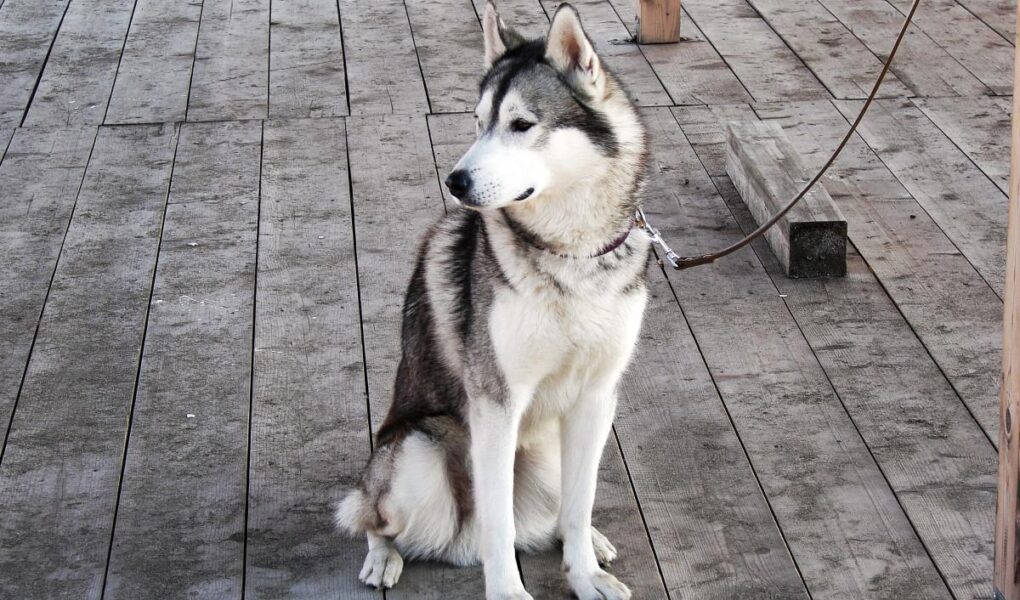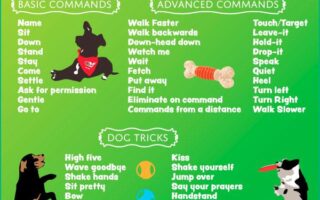Unleashing Potential: The Art of Husky Training
Huskies, with their striking blue eyes and boundless energy, are more than just a pretty face; they are a breed steeped in history and characterized by their spirited nature. Originally bred as sled dogs in the icy expanses of Siberia, these canines are known for their incredible endurance and strong-willed demeanor. Yet, as charming as their playful antics can be, training a husky presents unique challenges that require patience, consistency, and a touch of creativity. In this article, we will delve into the essential techniques and thoughtful approaches that every husky owner should consider, transforming the task of training into an enriching journey for both dog and handler. From understanding their innate instincts to employing effective training methods, we’ll explore how to foster a balanced relationship based on companionship and mutual respect. Join us as we uncover the secrets to successfully navigating the exciting world of husky training.
Table of Contents
- Understanding the Unique Temperament of Huskies
- Essential Training Techniques for Effective Obedience
- Creating a Structured Routine for Success
- Incorporating Mental Stimulation into Daily Activities
- Q&A
- Closing Remarks
Understanding the Unique Temperament of Huskies
The Siberian Husky is well-known for its striking appearance and energetic spirit. Understanding their distinct temperament is crucial for effective training. Huskies are often described as independent, intelligent, and spirited, which can make them a handful for novice owners. They possess a strong prey drive and a natural inclination to explore their surroundings, leading them to sometimes ignore commands, especially if something more enticing catches their eye. This inherent stubbornness can be perceived as a challenge, but it is important to channel their energy positively. Engaging training sessions that incorporate physical activity work best, ensuring that both mind and body are stimulated during the process.
When training a Husky, it is beneficial to adopt a strategy that focuses on positive reinforcement. This breed responds well to rewards and praise, which fosters a deeper bond between you and your furry companion. Here are some key attributes to keep in mind while working with them:
- Consistency: Use the same commands and cues to avoid confusion.
- Patience: Allow time for learning and do not rush the process.
- Socialization: Expose them to various environments and people from an early age.
- Variety: Keep training sessions engaging with different activities and challenges.
Essential Training Techniques for Effective Obedience
To ensure your husky is well-behaved and responsive, it’s crucial to incorporate a variety of training techniques tailored to their unique needs. Positive reinforcement is one of the most effective methods; rewarding your husky with treats or praise for obeying commands helps build a strong bond and encourages repeat behavior. Additionally, using clear, consistent commands can prevent confusion. Dogs thrive on routine, so establishing a structured training schedule can significantly enhance their learning experience. Here are some key techniques to consider:
- Clicker Training: A great tool to mark desired behaviors and communicate effectively.
- Leash Training: Teaching your husky to walk nicely on a leash to prevent pulling.
- Socialization: Exposing your husky to various environments and other dogs to ensure well-rounded behavior.
- Short Sessions: Keeping training sessions brief maximizes focus and retention.
| Technique | Description |
|---|---|
| Clicker Training | A method that uses sound to indicate a correct behavior. |
| Leash Training | Focus on walking without pulling, fostering control. |
| Socialization | Introduces your husky to different people and pets. |
| Short Sessions | Sessions limited to 5-10 minutes for effective learning. |
Regular practice, patience, and understanding that each husky learns at their own pace are essential for successful training. Incorporating play-based activities into training sessions can foster a positive association with commands and help maintain your husky’s interest. It’s also beneficial to regularly challenge their intelligence with puzzle toys and obedience games, providing mental stimulation that complements physical exercise. The following strategies can enhance your training success:
- Mix It Up: Vary training activities to maintain engagement.
- Establish Routine: Consistent schedules allow your husky to anticipate and prepare for training.
- Utilize Visual Cues: Hand signals can reinforce verbal commands, offering additional understanding.
- Patience is Key: Allow your husky to learn at their own pace without rushing.
Creating a Structured Routine for Success
Establishing a structured routine is invaluable when training a husky. These energetic dogs thrive on consistency and predictability, facilitating a smoother training experience. To create an effective routine, consider implementing the following key elements:
- Regular Training Sessions: Schedule short, engaging training sessions daily to maintain focus and enthusiasm.
- Consistent Commands: Use the same verbal cues to reinforce learning; repetition solidifies understanding.
- Exercise Time: Allocate specific periods for physical activity to expend energy and promote good behavior.
- Positive Reinforcement: Incorporate treats or praise right after your husky exhibits a desired behavior to encourage repetition.
Additionally, tracking the progress of your husky can help ensure both you and your dog stay on the right path. Maintaining a simple chart can be a refreshing way to visualize growth and areas needing attention:
| Behavior | Days Trained | Success Rate (%) |
|---|---|---|
| Sit | 7 | 85 |
| Stay | 5 | 70 |
| Come | 4 | 90 |
Documenting these routines not only provides a clear path for training but also fosters a stronger bond between you and your husky. As they become more integrated into their routine, you’ll notice remarkable improvements in both behavior and response, taking your training journey to new heights.
Incorporating Mental Stimulation into Daily Activities
Integrating mental stimulation into the training routines for huskies enriches their lives and strengthens the bond between pet and owner. These intelligent dogs thrive on challenges that engage both their minds and bodies. You can seamlessly weave stimulating activities into daily life by utilizing common objects and simple commands. Consider engaging in games that require problem-solving, such as:
- Hide and Seek: Have your husky stay in one spot while you hide, then call them to find you.
- Treasure Hunt: Use their favorite treats or toys, hiding them around the house or yard.
- Interactive Puzzle Toys: Utilize toys that dispense treats as they solve challenges.
To ensure your husky receives a well-rounded experience, you can include specific training sessions that target cognitive skills. For instance, teaching advanced commands or tricks can boost their mental agility. Below are some simple activities and their corresponding benefits:
| Activity | Benefits |
|---|---|
| Agility Training | Enhances focus and coordination |
| Clicker Training | Improves communication and response times |
| Obstacle Courses | Stimulates problem-solving and reduces boredom |
Q&A
Q&A on Husky Training: Tips, Techniques, and Tricks
Q1: What makes huskies unique when it comes to training?
A1: Huskies are independent and strong-willed, which means they often have a mind of their own. Their high energy levels and strong prey drive make them challenging yet rewarding companions. Understanding their background as working dogs will help you tailor your training methods. Huskies thrive on mental and physical stimulation, so incorporating fun activities can make the training process more enjoyable for both you and your furry friend.
Q2: What are the fundamental commands I should teach my husky first?
A2: Start with basic commands like “sit,” “stay,” ”come,” and ”leave it.” These foundational commands will not only help in daily interactions but also improve your dog’s safety. Use positive reinforcement techniques, such as treats, praise, and playtime, to encourage your husky to follow these commands. Consistency and patience are key!
Q3: How can I train my husky to walk on a leash without pulling?
A3: Leash training can be a challenge with huskies due to their energetic nature. Begin by introducing your husky to a well-fitted harness and a sturdy leash. Use treats to encourage them to walk beside you. Whenever they pull, stop and stand still until they return to your side. Reward them when they do, and gradually increase the distance you walk together. Consider practicing in low-distraction environments before venturing out into busier areas.
Q4: How important is socialization in a husky’s training?
A4: Socialization is crucial for huskies as it helps them develop confidence and reduces the likelihood of behavioral issues. Introduce your husky to various environments, people, and other animals to help them adjust. Aim for positive experiences, rewarding calm behavior with treats and praise. The goal is to create a well-rounded and adaptable companion!
Q5: What are some creative training exercises specific to huskies?
A5: Huskies love to engage their minds and bodies! Consider trying out some creative exercises like agility training, where you can set up a mini obstacle course in your backyard. Scent games can also be a fantastic way to stimulate their senses—hide treats in different places and encourage your husky to find them. Additionally, exploring dog sports like mushing or skijoring could tap into their natural instincts and provide a structured outlet for their energy.
Q6: How can I address stubbornness during training sessions?
A6: Stubbornness in huskies often stems from their independent nature. To manage this, make training sessions engaging and short. Use a variety of training techniques to keep things fresh—huskies can get bored quickly! If your husky seems disinterested, try incorporating their favorite toys or activities into the session. Most importantly, stay calm and patient; getting frustrated can hinder progress.
Q7: Lastly, how do I ensure lifelong learning and obedience in my husky?
A7: The key to lifelong learning is to keep training fun and varied. Regular sessions and refresher courses can help maintain your husky’s skills. Social activities, such as group training classes or playdates with other dogs, can also reinforce positive behaviors. Remember, huskies are intelligent and crave mental challenges, so continue to introduce new tricks and activities to stimulate their minds even as they mature.
training a husky requires a balance of patience, creativity, and understanding of their unique personality. With consistent effort and lots of love, you’ll build a strong bond with your spirited companion while instilling obedience and confidence. Happy training!
Closing Remarks
training a husky is not just about instilling commands; it’s about building a bond of trust and understanding between you and your furry companion. With their spirited nature and boundless energy, huskies can transform training sessions into adventures filled with laughter and learning. Every challenge faced along the way—be it nipping, stubbornness, or an affable desire to run—serves as an opportunity for growth, not just for your pet, but for you as a devoted owner.
As you embark on this rewarding journey, remember that patience, consistency, and positive reinforcement are your best allies. Celebrate each small victory, whether it’s a successful recall or simply a joyous trot by your side. With time, dedication, and a sprinkle of whimsy, you’ll find that your husky isn’t just a well-trained dog; they’re an enthusiastic partner in life’s many escapades.
So gather your treats, harness your enthusiasm, and let the adventure of husky training begin. After all, the path to a well-behaved husky leads not just to obedience, but to a joyful and unbreakable bond that will enrich your lives for years to come. Happy training!



